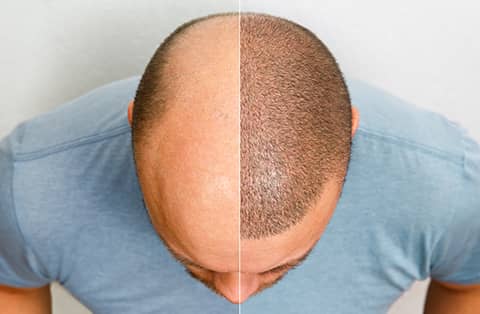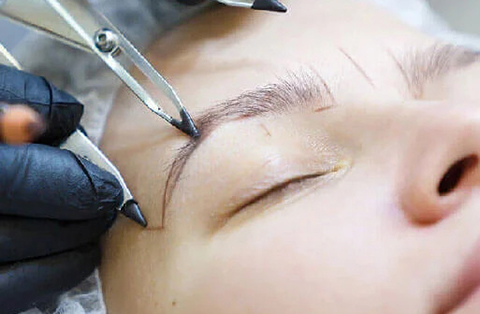Considering a long-lasting solution for missing teeth?
Endosteal implants offer a reliable and effective method to restore your smile and improve oral health. These implants, inserted directly into the jawbone, provide a sturdy foundation for replacement teeth.
Whether you’re interested in the procedure, the recovery process, or the benefits, this article covers all the essential information. Learn how endosteal implants can transform your dental health, enhance your appearance, and boost your confidence.
Discover why endosteal implants might be the perfect solution for you.
What is an Endosteal Implant?
Endosteal implants are a type of dental implant placed directly into the jawbone. They serve as artificial roots for replacement teeth. Typically made of titanium, these implants integrate with the bone to provide a strong and stable foundation. They can support single crowns, bridges, or dentures, making them a versatile option for tooth replacement.
Endosteal implants are the most common type of dental implant due to their effectiveness and durability, offering a permanent solution to missing teeth and helping to maintain jawbone health.
What are other types of implants?
While endosteal implants are the most common, there are other types suited to different needs and conditions. Here’s a quick overview:
Other Types of Dental Implants
Subperiosteal Implants: Placed on top of the jawbone but beneath the gum tissue, ideal for patients with insufficient bone height.
Zygomatic Implants: Anchored in the cheekbone (zygoma) rather than the jawbone, used when the upper jawbone lacks adequate density or volume.
Mini Implants: Smaller in diameter than regular implants, often used for stabilizing lower dentures and in cases with limited space.
All-on-4 Implants: A technique using four strategically placed implants to support a full arch of replacement teeth, providing a fixed solution for edentulous patients.
How do endosteal implants differ from other type of dental implants?
Endosteal implants differ from other types of dental implants primarily in their placement and structure. Here are the key differences:
Placement:
Endosteal Implants: These are placed directly into the jawbone. They require sufficient bone density and volume for successful integration.
Subperiosteal Implants: Positioned on top of the jawbone but underneath the gum tissue. They are an option for patients with insufficient bone height who cannot undergo bone augmentation procedures.
Structure:
Endosteal Implants: Typically shaped like small screws, cylinders, or plates. They provide a stable foundation by fusing with the bone through a process called osseointegration.
Subperiosteal Implants: Consist of a metal frame custom-fitted to sit on the jawbone. Posts attached to the frame extend through the gums to hold the prosthetic teeth.
Usage:
Endosteal Implants: Suitable for most patients with adequate bone structure and are the most commonly used type of implant.
Subperiosteal Implants: Less common and usually considered when patients have inadequate bone for endosteal implants and are not candidates for bone grafting.
Stability:
Endosteal Implants: Offer superior stability due to their integration with the bone.
Subperiosteal Implants: Provide less stability compared to endosteal implants as they sit on the bone rather than within it.
Understanding these differences helps patients and dental professionals choose the most appropriate type of implant based on individual needs and anatomical considerations.
Why are endosteal dental implants popular?
Endosteal dental implants are popular for several reasons:
High Success Rate: They have a high success rate due to their direct integration with the jawbone, providing a stable and long-lasting solution for missing teeth.
Durability: Made primarily of titanium, endosteal implants are highly durable and can last many years, often a lifetime with proper care.
Natural Appearance: These implants support crowns, bridges, or dentures that look and feel like natural teeth, enhancing both appearance and functionality.
Bone Health: By stimulating the jawbone, endosteal implants help prevent bone loss that typically follows tooth loss, maintaining facial structure and oral health.
Versatility: They can be used to replace a single tooth, multiple teeth, or support full dentures, making them a versatile option for various dental restoration needs.
Improved Function: Endosteal implants provide strong support for chewing and speaking, significantly improving the patient’s quality of life compared to traditional dentures.
Comfort: Unlike removable dentures, endosteal implants become a fixed part of the mouth, offering greater comfort and convenience without the need for adhesives.
These benefits make endosteal implants a preferred choice for both patients and dental professionals looking for a reliable and effective tooth replacement option.
Considering Endosteal Dental Implant Surgery
Endosteal implants are a popular and effective solution for replacing missing teeth. Understanding the procedure, candidate suitability, and materials used can help you make an informed decision.
What is the procedure for endosteal implants?
The procedure for endosteal implants involves several stages:
Consultation and Planning: Your dentist or oral surgeon will assess your oral health, take X-rays, and create a treatment plan.
Implant Placement: The oral surgeon surgically inserts the titanium implant into the jawbone. This is usually done under local anesthesia.
Osseointegration: Over the next few months, the implant fuses with the bone, providing a stable foundation.
Abutment Placement: After osseointegration, an abutment is attached to the implant. This connects the implant to the replacement tooth.
Crown Placement: Finally, a custom-made crown is placed on the abutment, completing the restoration.
Who is a good candidate for endosteal implants?
Ideal candidates for endosteal implants include individuals who:
Have one or more missing teeth.
Possess adequate bone density and volume in the jaw.
Maintain good oral hygiene and overall health.
Are non-smokers or can quit smoking during the healing process.
Have healthy gums and are free of periodontal disease.
Patients with insufficient bone may require bone grafting before implant placement.
What materials are commonly used in endosteal implants?
The most common materials used in endosteal implants are:
Titanium: Known for its strength, durability, and biocompatibility, titanium is the most widely used material. It integrates well with bone, minimizing the risk of rejection.
Zirconia: An alternative to titanium, zirconia implants are metal-free and offer a natural tooth-like appearance. They are suitable for patients with metal allergies and those seeking a more aesthetic solution.
Both materials provide a strong foundation for replacement teeth, ensuring long-term success and functionality.
By understanding the procedure, assessing candidacy, and knowing the materials used, you can confidently consider endosteal implants as a reliable solution for restoring your smile and improving oral health.
Exploring Endosteal Implant Costs
Endosteal implants are an effective solution for missing teeth, but understanding the associated costs is crucial. This guide explores typical costs, influencing factors, and insurance coverage for endosteal implant procedures.
How much do endosteal implants typically cost?
The cost of endosteal implants can vary widely. On average, you can expect to pay between $3,000 and $5,000 per implant. This price includes the implant, abutment, and crown. Complex cases or additional procedures like bone grafting may increase the overall cost.
Are there any factors that can influence the cost of endosteal implants?
Several factors can influence the cost of endosteal implants, including:
Location: Dental implant costs can vary significantly based on geographic location. Urban areas tend to have higher prices than rural areas.
Dentist’s Experience: Highly experienced and reputable dentists may charge more for their expertise.
Preliminary Procedures: Additional treatments such as bone grafting, sinus lifts, or extractions can add to the overall cost.
Materials Used: The choice between titanium and zirconia implants can affect the price. Custom-made crowns may also vary in cost depending on the material.
Number of Implants: The more implants you need, the higher the total cost. Some dentists offer discounts for multiple implants.
Is dental insurance likely to cover endosteal implant procedures?
Dental insurance coverage for endosteal implants varies. Many dental insurance plans do not fully cover implant procedures, considering them elective or cosmetic. However, some plans might cover a portion of the costs, particularly if implants are deemed medically necessary. It’s essential to check with your insurance provider for specifics on coverage and any applicable deductibles or co-pays. Additionally, some dental practices offer financing options or payment plans to help manage the cost.
Understanding the costs associated with endosteal implants, the factors influencing these costs, and potential insurance coverage can help you make an informed decision and plan your budget effectively.
Comparing Endosteal vs Subperiosteal Implants
When considering dental implants, it’s important to understand the differences between endosteal and subperiosteal implants. Each type has distinct characteristics and is suited to specific conditions. This guide compares these two types of implants, reasons for choosing subperiosteal implants, and the variations in their placement processes.
What are the differences between endosteal and subperiosteal implants?
Endosteal and subperiosteal implants differ primarily in their placement and structure:
Endosteal Implants: Inserted directly into the jawbone, these implants act as artificial roots for replacement teeth. They are typically shaped like screws, cylinders, or plates and are made of titanium or zirconia.
Subperiosteal Implants: Placed on top of the jawbone but beneath the gum tissue, these implants consist of a metal frame with posts that protrude through the gums to hold the prosthetic teeth. They are used when there is insufficient bone height or density to support endosteal implants.
Why might a dentist recommend subperiosteal implants over endosteal?
A dentist might recommend subperiosteal implants over endosteal implants for several reasons:
Bone Insufficiency: Patients with inadequate bone height or density who cannot undergo bone grafting are ideal candidates for subperiosteal implants.
Avoiding Bone Augmentation: For patients who prefer not to have additional surgeries like bone grafting, subperiosteal implants provide a viable alternative.
Complex Medical Conditions: Some medical conditions or anatomical limitations might make endosteal implants less feasible, making subperiosteal implants a better option.
How does the placement process vary between these two types of implants?
The placement processes for endosteal and subperiosteal implants differ significantly:
Endosteal Implants:
Consultation and Planning: Initial assessment and treatment planning.
Implant Placement: Surgical insertion of the implant into the jawbone under local anesthesia.
Osseointegration: A healing period of several months during which the implant fuses with the bone.
Abutment and Crown Placement: Attachment of the abutment followed by the placement of the custom crown.
Subperiosteal Implants:
Consultation and Planning: Detailed assessment and imaging to create a custom-fit metal frame.
Implant Placement: The metal frame is placed on top of the jawbone but under the gum tissue during surgery.
Healing Period: The gums heal around the posts protruding through the gum tissue.
Prosthetic Attachment: The artificial teeth are attached to the posts.
Understanding these differences helps patients make informed decisions about which implant type is best suited for their specific dental needs and conditions.












